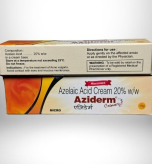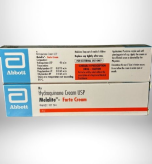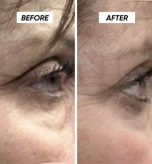Stacking Strategies: Best Moisturizers to Pair with A‑Ret and Tretiheal Products
A‑Ret Gel and Tretiheal Cream are two of the most popular tretinoin-based products on Tretino.com and Russia.tretino.com. But one major question remains: what moisturizers should you use with them? In this guide, we break down the best moisturizer stacking strategies based on skin type, irritation level, and product form (gel vs cream).
Why Moisturizer Choice Matters with Tretinoin
Tretinoin—especially in gel form like A‑Ret—can cause dryness, flaking, and irritation. Moisturizer plays a crucial role in building skin tolerance, preventing barrier damage, and increasing product efficacy over time.
Types of Moisturizers That Work Best
- Ceramide-based creams – Repair barrier, reduce sensitivity
- Glycerin + Hyaluronic Acid formulas – Attract water and boost hydration
- Petrolatum-based (occlusives) – Lock in moisture, best for extremely dry skin
- Minimalist moisturizers – No fragrance, no actives that could react with tretinoin
Recommended with A‑Ret Gel (0.025%, 0.05%)
Since A‑Ret is a microsphere gel, it absorbs quickly but can leave skin dry or tight. Choose lightweight to mid-weight moisturizers that cushion the skin without clogging pores.
- Cetaphil Moisturizing Cream – Non-comedogenic, dermatologist recommended
- Neutrogena Hydro Boost Gel – Contains hyaluronic acid; great for oily skin
- La Roche-Posay Toleriane Double Repair – Has ceramides and niacinamide
- Simple Replenishing Rich Moisturizer – Budget-friendly, fragrance-free
View A‑Ret Gel on Tretino.com →
Recommended with Tretiheal Cream (0.025%, 0.05%, 0.1%)
Tretiheal is a creamy formulation that already contains emollients, so users with dry or normal skin may not need heavy-duty moisturizers. However, a calming cream can help buffer irritation or during purging weeks.
- CeraVe Moisturizing Cream – Loaded with ceramides and hyaluronic acid
- Vanicream – Free from allergens, parabens, and fragrances
- Avene Cicalfate+ – Great for healing broken or sensitive skin barriers
- Bioderma Atoderm Cream – Rich texture, ideal for flaky or peeling skin
Stacking Tips: When & How to Apply
- Cleanse – Use a gentle, sulfate-free face wash
- Wait 20 minutes – Let skin fully dry before applying tretinoin
- Apply Tretinoin (A‑Ret or Tretiheal) – Use a pea-sized amount
- Wait 10–15 minutes – Optional buffering technique
- Moisturize generously – Especially around eyes, mouth, and neck
Double Moisturizing (Sandwich Method)
To reduce peeling or redness, try this:
- Apply a thin layer of moisturizer before tretinoin
- Then apply tretinoin
- Finish with another layer of moisturizer
This “sandwich method” is ideal for beginners or those with reactive skin.
What to Avoid
- Moisturizers with strong actives (vitamin C, AHA, BHA, retinol)
- Fragrance-loaded creams
- Oily formulations if you’re acne-prone
- Over-moisturizing immediately after tretinoin if skin is not dry
Conclusion: Choose Based on Your Formula
If you’re using A‑Ret Gel: focus on lightweight, hydrating gels or lotions.
If you’re using Tretiheal Cream: use a thicker or repair-focused moisturizer only if your skin feels tight or flaky.
Always patch test, and adjust as your skin builds tolerance over 4–8 weeks. You can explore all available tretinoin-based products here →.
Disclaimer: This guide is not a substitute for professional medical advice. Always consult your dermatologist before combining products.



